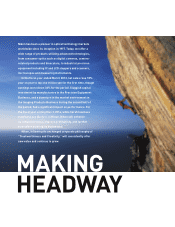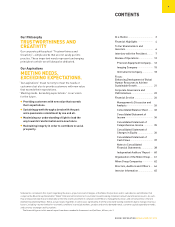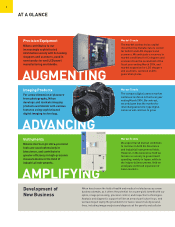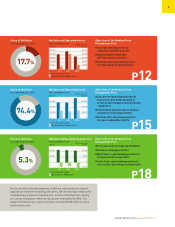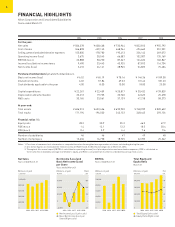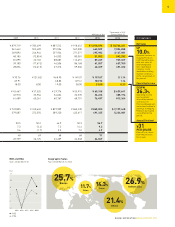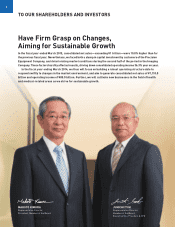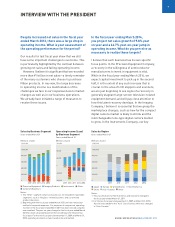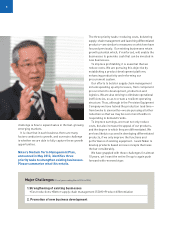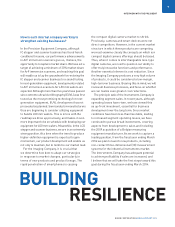Nikon 2013 Annual Report Download - page 11
Download and view the complete annual report
Please find page 11 of the 2013 Nikon annual report below. You can navigate through the pages in the report by either clicking on the pages listed below, or by using the keyword search tool below to find specific information within the annual report.
INTERVIEW WITH THE PRESIDENT
9
NIKON CORPORATION A N N U A L R E P O R T 2 0 13
How is each internal company working to
strengthen existing businesses?
In the Precision Equipment Company, although
IC stepper and scanner business has faced harsh
conditions for years, our performance advancements
in ArF immersion scanners give us, I believe, the
opportunity to recapture market share. We have set a
target of achieving a minimum of 30% market share
for ArF immersion scanners, and reaching this goal
will enable us to lay the groundwork for restoring the
IC stepper and scanner business to a sound footing.
In next-generation equipment, developments related
to ArF immersion scanners for 450 mm wafers are
expected. Although more than five years have passed
since extreme ultraviolet lithography (EUVL) was first
touted as the most promising technology for next-
generation equipment, EUVL development has not
proceeded as planned. Semiconductor manufacturers
thus are beginning to consider utilizing equipment
to handle 450 mm wafers. This is in line with the
roadmap we drew up previously, and makes it even
more important to be on schedule with developing our
equipment for 450 mm wafers. Meanwhile, in the LCD
stepper and scanner business, we are in an extremely
strong position. At a time when the trend to produce
higher-definition equipment is expected to gain
momentum, our product development will enable us
not only to maintain, but to reinforce our market lead.
For the Imaging Company, it is crucial that
we determine how best to adapt our strategies
in response to market changes, particularly in
terms of new products and product lineups. The
rapid penetration of smartphones is causing
the compact digital camera market to shrink.
Previously, cameras and smart devices were not
direct competitors. However, in the current market
structure in which these products are competing,
we must examine closely the concepts on which our
compact digital camera offerings should be based.
Thus, when it comes to interchangeable lens-type
digital cameras, we need to question our ability to
offer truly innovative functions and performance.
Another essential element is cost reduction. Since
the Imaging Company produces a very high volume
of products, it could be considered a low-margin,
high-turnover business. Bearing this in mind, we will
review all business processes, and focus on whether
we can realize even greater cost reductions.
The principle task of the Instruments Company is
expanding segment sales. In recent years, although
operating losses have risen, we have viewed this
as up-front investment, essential for business
development over the long term. Since market
conditions have been less than favorable, leading
to increased segment operating losses, we have
continued to pursue broad investments, covering
aspects from development to sales and including
the 2009 acquisition of a Belgian measuring
equipment manufacturer. As we work to capture a
leading position, from the fiscal year ending March
2014 we plan to launch new products, including
non-contact three-dimensional (3D) measurement
systems for the industrial instruments market.
The Instruments Company has adequate potential
to achieve profitability if sales are increased, and
I believe that we will take the first steps toward this
goal during the fiscal year ending March 2014.
BUILDING
RESILIENCE


